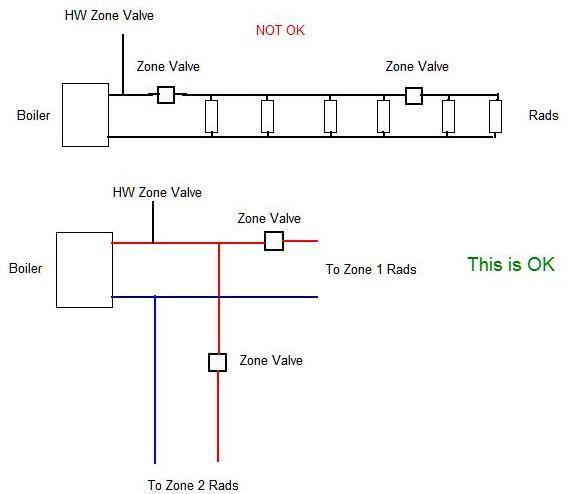Hi all - looking for some guidance and advice please. I live in a large detached property built in 2000 to the then current regs by a very reputable local builder.
We have lived here for 4 years however I noticed that I dont have a room stat fitted in the house, just TRVs throughout. This is costing me fortune to heat (I think its a fortune anyway) as my annual gas bill is over £2k (but I do have a gas Aga which eats gas!).
Anyway basic spec is:
Ideal Standard Mexico RS125 floor mounted boiler
Drayton Lifestyle LP722 Programmer
Honeywell 3 port zone valve
Grundfoss pump
All of which is in the garage
This set up feeds 25 radiators all fitted with Drayton Lifestyle TRVs except 4 heated towel rails which have standard valves (there are 5 in total but one has a TRV).
For completeness the HW cylinder is an Ariston unvented one with a Grundfoss gold pump supplying hot water. This is controlled via a separate Drayton Lifestyle LP111 Programmer along with a two port Honeywell zone valve (cant remember what this does!). All of this part of the system being in the airing cupboard.
Anyway I would like to fit a room stat and have a simple Drayton RTS1 to fit. The wiring for it seems quite straightforward but I would like to know where I should take the mains voltage from and the call for heat signal?
Also I assume that it is good practice to use a three core and earth cable to run to the stat and just not connect the earth (rather than use the earth as the call for heat?)
Finally is this stat good enough for the job/system I have or should I invest in something more advanced (programmable/digital maybe?).
Thanks in advance
Nick
We have lived here for 4 years however I noticed that I dont have a room stat fitted in the house, just TRVs throughout. This is costing me fortune to heat (I think its a fortune anyway) as my annual gas bill is over £2k (but I do have a gas Aga which eats gas!).
Anyway basic spec is:
Ideal Standard Mexico RS125 floor mounted boiler
Drayton Lifestyle LP722 Programmer
Honeywell 3 port zone valve
Grundfoss pump
All of which is in the garage
This set up feeds 25 radiators all fitted with Drayton Lifestyle TRVs except 4 heated towel rails which have standard valves (there are 5 in total but one has a TRV).
For completeness the HW cylinder is an Ariston unvented one with a Grundfoss gold pump supplying hot water. This is controlled via a separate Drayton Lifestyle LP111 Programmer along with a two port Honeywell zone valve (cant remember what this does!). All of this part of the system being in the airing cupboard.
Anyway I would like to fit a room stat and have a simple Drayton RTS1 to fit. The wiring for it seems quite straightforward but I would like to know where I should take the mains voltage from and the call for heat signal?
Also I assume that it is good practice to use a three core and earth cable to run to the stat and just not connect the earth (rather than use the earth as the call for heat?)
Finally is this stat good enough for the job/system I have or should I invest in something more advanced (programmable/digital maybe?).
Thanks in advance
Nick



